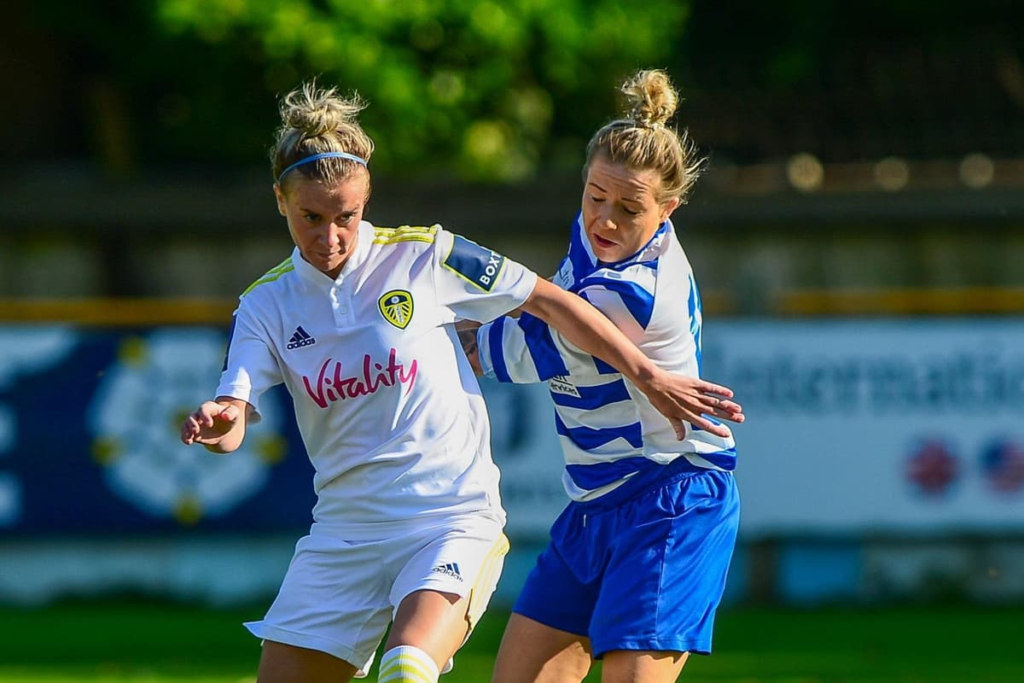The world of women’s football has been undergoing a remarkable transformation. With each passing season, the game gains more fans, more media coverage, and a higher profile.
Among the teams contributing to this surge in popularity is Leeds United Women.
But amid this growth, an important question looms large for players and fans alike: do Leeds United Women get paid fairly for their efforts on the pitch?
What is the current situation of Women’s Football in the UK?

Women’s football in the United Kingdom has developed considerably since the first days of association football and women playing for one-off charity matches.
The current format is a league pyramid not dissimilar to the men’s, with two top professional leagues Women’s Super League (WSL) followed by Championship and more divisions beyond that.
Even with its methodical structure, women’s soccer continues to suffer from inequalities relative to the men’s leagues.
The difference is night-and-day in terms of pay and resources. Several footballers in the Premier League earn millions while many female players must work a second job to support themselves.
And this discrepancy isn’t just because of skill or dedication, but rather born from years and years of underinvestment in women’s sport and how society perceives it.
Leeds United Women: The story so far

Leeds United Women have experienced plenty of both throughout their history. A long-standing satellite of Leeds United’s overarching sporting umbrella, the women’s team has grown in a piecemeal fashion over its decades.
They have enjoyed a number of highs, most notably when it comes to their league and cup form.
The key element in their accomplishments, however, is not merely on-field success but one that involves assembling an ecosystem conducive to nurturing budding talent.
After all, the team has been a springboard for many players who later have gotten national and international credits.
But along the way, despite these successes, their grand ambitions have not always been matched in financial and institutional patronage.
Economic model of Women Football

Clubs which continue to fulfil league requirements including the likes of Leeds United Women are able to rely on a mix of club support, sponsorship deals and sometimes community grants in order to keep them going.
But more often than not, the financial support is far less relative to that given for men’s teams. From player pay to training facilities, team development and more.
Whereas men’s teams can cash in through broadcast deals and merchandising for women, it is often a different story. It is still in the diapers of the sponsorship market compared to men’s football.
This plays a role in the way money is spent and has severe economic repercussions on both player and club.
Salaries of Players in Leeds United Women

Juggling player wages has been the classic problem one often hears of for women’s football sides, and much is no different at Leeds United Women.
It pays its players a fraction of what the corresponding leagues’ male players make in salary. At least in part because of the smaller revenue streams available to women’s sport.
During this time, however, that contrasts with some sides in the WSL being able to provide competitive wages, but for lower-league outfits like Leeds United Women those offers may not be possible.
Because of this pay discrepancy, many players are forced to find alternative careers or sponsorships in order to add some additional money into the wallet.
Factors Influencing Salaries

Like any big football club, however, Leeds United Women have been paying their players in line with the market and there are a range of reasons behind that broader salary structure across women’s football.
Sponsorship is very important as more sponsorships means bigger backing from the brands and therefore higher salaries and supporting resources.
Also, fan engagement counts as more fans equals higher match-day revenues and merchandise sales while also in turn being able to pay the players a better wage.
Media outing This is another extremely important factor that affects player salaries. Indeed, the more women’s football grows commercially in its own right.
Finally team performance and status in the league are everything; successful teams can attract more viewers, sponsors which could bring them better salaries.
The future looks promising for pay equality

What Does The Future Hold For Pay Equality In Women’s Football? A steady rise in player wages is expected as interest levels are on the up.
There have been moves in recent years to address women’s conditions through collective bargaining agreements and more investment in youth development.
They have campaigned for equal prize money in tournaments and urged clubs to improve funding of women’s teams.
Our timelines for this off-field cultural evolution are short, but the momentum is beginning to build; slowly stakeholders at every level are starting to believe that perhaps it really does matter just as much when women take up football.
Conclusion
Overall, the way in which a club was deciding whether its players were being paid enough revealed much about wider problems within women’s football.
While progress has been made, we must ensure equity through ongoing advocacy and investment.
It is not just about levelling the playing field, but also recognizing and fostering worthy talent who deserve as much glory.
Here is the call to action for fans and stakeholders alike. We can help ensure the future of women’s football is as bright and equitable by attending matches, backing our teams with merchandise and calling for increased investment.
For more Interesting Articles, follow us on Facebook or join our brand new WhatsApp Channel for instant updates directly to your phone.

